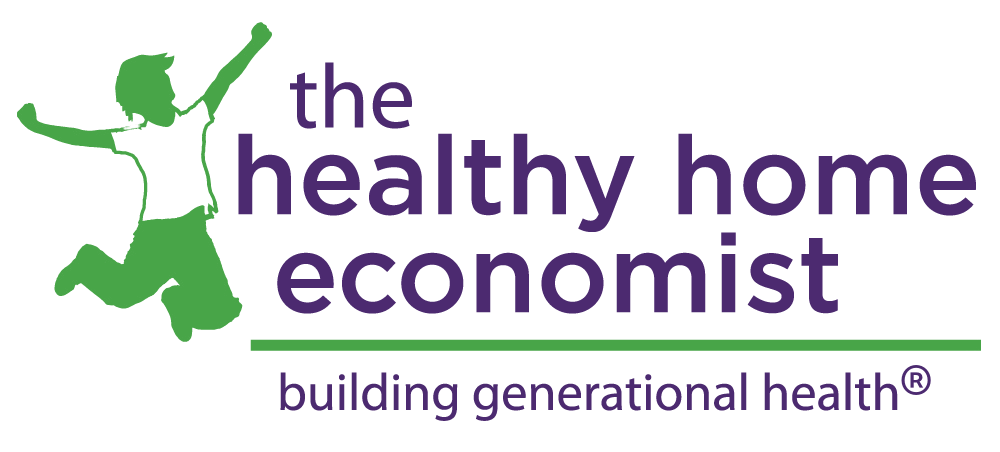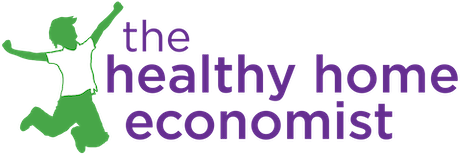How women can minimize or even completely avoid saggy breasts from breastfeeding with proper dietary preparation and strategic weaning to prepare the skin for maximum elasticity and repair.

One of the saddest things I sometimes hear from women who are pregnant or plan to become pregnant is that they intend to bottlefeed because they’ve been warned that breastfeeding causes droopy, saggy breasts.
Even women who are in full support of breastfeeding seem to accept that the choice to feed their child with Mother Nature’s best will ultimately sacrifice the firmness of breast tissue.
Are saggy breasts post nursing really just part and parcel of the process?
While every woman is different and certainly in some instances, pregnancy and breastfeeding can cause undesirable changes to the appearance of the bosom despite Mom’s best efforts, there are definite strategies that greatly lessen the impact.
In some cases, there can be little to no difference in breast appearance after pregnancy and nursing.
It really is possible to birth and nurse several children with little change in the appearance of the bosom after weaning the youngest child.
Could Saggy Breasts Syndrome perhaps primarily be the result of the appalling diet of most nursing mothers?
Does the modern, accepted approach to weaning abruptly also play a huge role in the loss of breast integrity?
Let’s take a look!
Diet for Strong Breast Tissue
The most important thing a woman can do prior to nursing is to adequately prepare the breasts for the stress and strain of nursing with a diet that results in very strong, elastic skin.
Of critical note is to embrace a traditional diet that includes butter, cream, full fat yogurt and other animal fats to maximize elastic breast tissue.
This also means avoiding toxic vegetable oils from factory-produced, low cholesterol spreads, dressings, and other processed foods.
This ideal pregnancy and nursing diet provides suggestions for daily fat intake.
The reason healthy fats in the diet help avoid saggy breasts is that every cell in your body has a cellular membrane that is ideally composed of at least 50% saturated fat.
When the cell membranes of the skin and tissues are composed of the proper fats, they are strong, resilient, and highly elastic.
Healthy Fats = Healthy Skin
If you avoid saturated fats and starve your skin of what it needs, the cell membranes will be improperly formed with an oval instead of a perfectly round shape.
This increases the risk of irreparable damage from the stretching and straining of the skin and breast tissue from nursing.
Incidentally, plenty of saturated fats in the diet is also key to avoiding stretch marks on the breasts when the milk rapidly comes in a few days after baby is born.
Skin cell membranes comprised of 50%+ saturated fat will be elastic and resilient from this sudden strain!
The benefit is stronger breast tissue that can return to its original pre-pregnancy and pre-nursing shape with as little change as possible.
Another benefit is that the breasts are more resistant to mastitis.
Elusive Nutrients
Plenty of vitamin K2 in the diet is important for breast tissue integrity as well.
This largely ignored nutrient is in the superfood natto in large amounts. Japanese women who consume it daily enjoy superior skin elasticity and resistance to sagging and wrinkling.
Low Vitamin K2 in the diet is literally the vitamin deficiency that is written all over your face (and breasts).
Over 90% of people are estimated to be seriously deficient in this nutrient!
Grassfed butter, ghee, emu oil, goose liver pate, and pastured eggs are other excellent sources of this nutrient.
Another critical fat that healthy skin needs is arachidonic acid.
This fat is primarily found in egg yolks and butter.
Interestingly, women in traditional Chinese provinces like Chongqing are encouraged to eat up to 10 eggs per day along with plenty of chicken and (1)
Without a doubt, arachidonic acid (AA) is an underappreciated fat for maintaining healthy skin.
It works by ensuring the proper formation of junctures between skin cells.
Without enough arachidonic acid in the diet, skin cannot adequately maintain moisture and is more susceptible to damage.
When the gaps are larger than they need to be, the water between cells evaporates from missing tight cell-to-cell junctions. (2)
Ideal Weaning Age
In addition to diet, the weaning approach a woman employs significantly impacts the perkiness versus sagginess of her bosoms at the conclusion of breastfeeding.
The modern approach to weaning is for Mom to initiate the process and do so fairly suddenly once the child starts eating solid foods or she goes back to work.
Moms beware: Weaning around the 4-6 month mark contributes greatly to saggy breasts.
This is the very time when baby’s demands for breastmilk are the greatest (hence, nursing breasts are at their largest size).
Stopping abruptly at this point is not a good idea!
It can be a primary cause for excessively saggy breasts similar to what happens when an obese person loses weight rapidly after gastric bypass surgery.
Tapering After Baby is on Solids
The better way to wean is as gradually as possible, ideally somewhere between the 2-4 year mark.
While this may seem to be a long time by modern standards, extended breastfeeding has many long-term health benefits for baby. (3)
When weaning is very gradual, the the demand for nursing eases off slowly as baby’s appetite for solid food increases.
This gives the body plenty of time to slowly shrink and reabsorb the breast tissue.
Skin that stretched and expanded to accommodate large quantities of breastmilk when the child was an infant can gradually be reabsorbed.
This strategic weaning approach greatly minimizes or can even completely prevent issues with sagging.
Think of the difference between someone who loses weight at a rapid pace (such as after gastric bypass surgery) versus someone who loses weight slowly but surely with improvements in diet and exercise alone.
In the first scenario, large amounts of excess, sagging skin usually need to be removed by a second surgery a year or two down the track.
The second scenario presents far fewer problems with excess, sagging skin with surgery likely not needed at all.
Extended Breastfeeding is a Traditional Practice
Nursing a child until 2-4 years old mimics the practice of Traditional Societies. (4)
These cultures carefully spaced the birth of children to ensure the optimal health of each child as well as the provision of nutrient-dense breastmilk until the child was a young toddler.
Careful attention and thought to the diet well before pregnancy and during nursing combined with a slow approach to weaning can go a long way toward ensuring that your breasts provide not only optimal nutrition for your baby but also maintain their shape and perkiness afterward!
(1) Successful Breastfeeding and Alternatives
(2) Precious Yet Perilous
(3) Do You Think Breastfeeding a 3-Year-Old is Strange? In the Ancient World, It Saved Lives
(3) Fat and Energy Contents of Expressed Human Breast Milk in Prolonged Lactation








Don’t the lactation consultants that think they have the market cornered on breastfeeding and are the end all and be all of information about nursing just drive you bonkers???? Sheesh people. You DON’T know everything .. be open to learning something new once in awhile!
My baby is 20 months & still nursing, we both enjoy it….Before I had him & breastfed I too was afraid of my breasts becoming saggy & deflated, but now I realize I dont care! My breasts are still beautiful, my husband loves them & they have comforted & fed & nurtured my baby well, so what if they arent as full & perky as they were before pregnancy, they arent as full and perky as when I was 18 either, bodies change, its part of life.
Couldn’t agree with you more. Very well said!!!
After being pregnant and/or breastfeeding for the last nine years, I don’t think any amount of saturated fat is going to help me. 🙂
I have three children that are three and a half years apart. I was either pregnant or breastfeeding for seven years straight. There is nothing, absolutely nothing, that I would take for that experience–not even twenty year old breasts! I must say that the breastfeeding did not really do that much. Only when I neared 50 did gravity do its nasty job! If you think bottle feeding will stave that off, you had better think again!
There are cultures where sagging breasts are a status symbol. This shows that you have nurtured the community. Wouldn’t it be wonderful if we could celebrate all those stretch marks, etc. that come with motherhood. Signs of our greatest transformation as women! Look what we can do – make and sustain life!
Thank you, wonderful comment! I moved to South America when I got pregnant to raise my daughter in a society that embraces just this as well as nursing 2-4 years is normal and I don’t have to hide my daughter from the world when she is nursing. Some of the comments here really make me sad.
This topic is a concern for many. I’m 55 and still as perky as ever. I nursed 4 kids. After nursing first I would “deflate”, and was down to a B. Then they gradually came back to their normal D. Yeah, they were much bigger during nursing. At the time, weighing 90lbs. with a humongous chest made for sore shoulders.
I thought it might be genetics, but that hasn’t held up in this family. I seem to be the only one so far with minimal stretch marks, low enough to not be seen. And the perkiness. Still waiting on my youngest daughter to see what happens, she deflated, but seems to be coming back. I’ve pondered this off and on as I wanted to be able to help my daughters with this issue. Wearing a bra, which is something I did when I was that large. Exercise and eating right.
As one girl said, maybe it’s just luck of the draw. Either way, I would never have not nursed my kids no matter what.
Great post, Sarah. Nutrition affects everything. And learning traditional mothering skills is such a boon for both mamas and kiddos. But I think it’s sad that we have a culture of women more concerned about their looks than their children’s health. Looks fade…it’s inevitable. Creating strong bodies, hence strong futures, for our kids is priceless.
they were saggie before because I LOST ALOT OF WIEGHT! before that fat brought them down
If I do not eat dairy due to intolerance, am I getting the same benefit taking ghee (butter oil). I am currently 5 months into breastfeeding…
I really have to quibble with the phrase “ideally between 2-4 years” is the right time for weaning. If you read Katherine Dettwyler’s chapter (#2) in Breastfeeding: Biocultural Perspectives, you’ll see that there are many ways to measure the right time to wean. Some are cultural and some are biological (as compared to non-human primates).
Katie, IBCLC